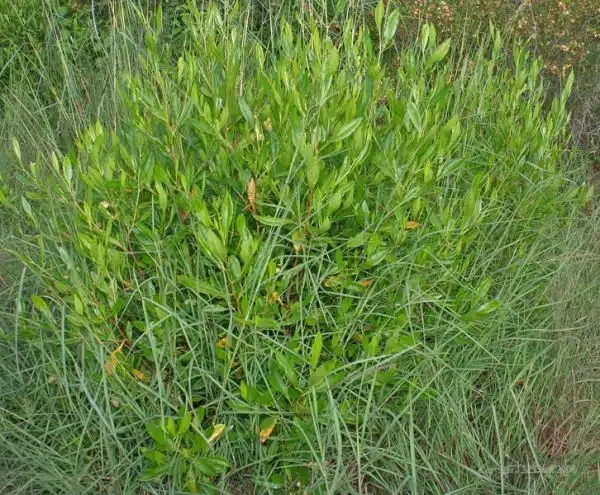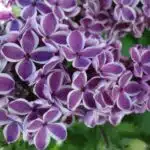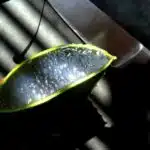Hopbush is a plant that has been used for centuries due to its medicinal properties. This shrub belongs to the family of Verbenaceae and is native to Australia, where it grows in dry and arid areas. Hopbush, also known as Dodonaea viscosa, is an evergreen shrub that can grow up to 3 meters tall. Its leaves are narrow and have a glossy texture, which makes them perfect for ornamental purposes.
Growing hopbush requires some basic knowledge about the plant’s needs and characteristics. In this guide, we will explore the different aspects of growing hopbush, including soil requirements, watering needs, pruning techniques, and pest control methods. We will also provide tips on how to propagate hopbush from cuttings or seeds and how to maintain healthy plants throughout their lifespan. Whether you are a beginner gardener or an experienced one looking for new challenges, this guide will help you achieve success with hopbush gardening.
The History And Uses Of Hopbush
Like the vast expanse of the desert, hopbush spreads its branches and leaves in a way that reminds one of a lush oasis. Hopbush, a shrub native to Australia, is known for its hardiness and versatility in different climates. For centuries, indigenous communities have used this plant both medicinally and culturally.
The medicinal properties of hopbush are diverse. Its leaves can be brewed into tea to help alleviate fever, stomach pains, and respiratory illnesses. The plant’s essential oil is also used as a natural insecticide due to its strong scent. In addition to its use in traditional medicine, hopbush has cultural significance for indigenous Australians. It is believed that the plant possesses spiritual qualities that can protect individuals from harm.
Hopbush comes in several varieties, each with unique features that make them distinguishable from one another. The most common types include Dodonaea viscosa purpurea and Dodonaea viscosa spatulata. These two varieties differ primarily in their leaf shape and coloration. Purpurea has purple-tinged leaves while spatulata has green leaves that taper at the end. Understanding how to identify these different varieties is crucial in growing and maintaining healthy hopbush plants.
Identifying Different Varieties Of Hopbush
After learning about the history and uses of hopbush, it’s time to delve into identifying different varieties. Hopbush is a diverse plant that can be found in various regions, so it’s important to understand the common varieties and their distinguishing characteristics.
One of the most prevalent types of hopbush is Dodonaea viscosa. This variety is native to Australia but has since spread to other regions like South Africa and South America. It typically grows up to 20 feet tall and has narrow green leaves that turn red or bronze in dry conditions. Another common variety is Dodonaea sinuolata, which is native to New Zealand and parts of Australia. It has distinctive wavy-edged leaves that are often used for medicinal purposes.
When it comes to distinguishing characteristics, it’s important to look at the foliage, flowers, and overall growth pattern of each variety. Dodonaea viscosa features small yellow-green flowers that grow in clusters along its branches while Dodonaea sinuolata produces small white flowers that bloom in spring or summer. Additionally, some varieties may have a more compact growth habit while others may be more sprawling.
Understanding the different varieties of hopbush can not only help with identification but also aid in selecting the right type for your garden or landscape needs. Whether you’re looking for a larger tree-like shrub or a smaller ornamental option, there’s a hopbush variety out there for you. In the next section, we’ll explore another crucial aspect of hopbush cultivation: understanding soil requirements.
Understanding Soil Requirements For Hopbush
To properly cultivate hopbush, it is essential to understand the soil requirements for optimal growth. The ideal soil type for hopbush cultivation should have good drainage and be rich in nutrients. Sandy loam soils are preferred as they provide good drainage while retaining enough moisture for the plant’s nutritional needs.
Improving fertility is also crucial in achieving healthy hopbush growth. This can be done by incorporating organic matter into the soil such as compost or aged manure. Inorganic fertilizers can also be used but should be applied sparingly to avoid over-fertilization which can lead to root burn and other plant health issues.
Optimal pH levels are another key factor in successful hopbush cultivation. A pH range of 6.0-7.5 is recommended, with a slightly acidic pH being preferred by the plant. It is important to regularly test the soil’s pH level and make adjustments as necessary using lime or sulfur additives.
| Soil Type | Drainage | Nutrient Content |
|---|---|---|
| Sandy Loam | Good | High |
| Clay Loam | Fair | Medium |
| Sand | Excellent | Low |
Understanding these soil requirements will ensure that your hopbush thrives in its environment and produces a bountiful harvest. In addition to improving fertility and maintaining optimal pH levels, monitoring watering needs and techniques is equally important for healthy growth.
Watering Needs And Techniques For Healthy Growth
It is a fact that inadequate watering is one of the leading causes of hopbush death. Therefore, to ensure healthy growth and a lush appearance, it is important to understand the watering needs of this plant. The watering frequency should be determined by the soil moisture levels rather than a strict schedule.
Hopbushes should be watered when the top 2 inches of soil are dry. This will prevent overwatering or underwatering which can cause root rot or dehydration respectively. Additionally, it is recommended to use drip irrigation or a soaker hose instead of overhead sprinklers as they can cause water to evaporate before it reaches the roots.
Furthermore, to avoid excessive transpiration during hot weather conditions, watering should be done in the early morning or late afternoon. This will allow for optimal absorption and retention of moisture in the soil. By following these simple techniques, hopbushes can thrive and flourish with minimal effort. In the subsequent section, we will discuss pruning techniques for optimal shape and size that will further enhance their aesthetic appeal.
Pruning Techniques For Optimal Shape And Size
Proper pruning is essential to ensure the healthy growth of your hopbush. The best pruning techniques involve removing dead, diseased or damaged branches to maintain the plant’s shape and size. Pruning also promotes new growth, increases air circulation, and maximizes sunlight exposure to lower leaves.
One of the most common pruning mistakes is over-pruning. This occurs when too much foliage is removed from the plant, leading to stress and reduced vigor. It’s important to only remove what’s necessary while maintaining at least one-third of the plant’s foliage. Another mistake is improper timing. Hopbush should be pruned during winter or early spring before new growth emerges.
To achieve optimal shape and size, start by removing any dead or diseased branches using sharp pruning shears. Next, prune back any long shoots that are growing beyond the desired shape of your hopbush. Lastly, thin out any overcrowded areas to promote better air circulation and sunlight exposure.
Engage your audience with these helpful tips:
- Regularly inspect your hopbush for signs of disease or damage
- Use clean and sharp pruning shears to prevent damage to healthy branches
- Avoid pruning during hot weather as this can cause additional stress on the plant
- Consider hiring a professional gardener if you’re unsure about how to properly prune your hopbush.
Next up: Pests and Diseases to Watch Out For – Protecting Your Hopbush
Pests And Diseases To Watch Out For
It is an irony that while hopbush is known for its ability to tolerate harsh conditions, it is not immune to pests and diseases. As a gardening expert, it’s important to always be vigilant in monitoring your hopbush for any signs of infestation or infection. Integrated pest management (IPM) is a good practice that involves using a combination of natural remedies and chemical control measures to manage pests and diseases.
One common pest that can attack hopbushes are spider mites. These tiny arachnids feed on the plant’s sap, causing discoloration and stunted growth. To prevent their spread, regular pruning and removal of infected leaves can help reduce their numbers. Additionally, introducing beneficial insects like ladybugs or lacewings can also help control spider mite populations.
Another disease that hopbushes are susceptible to is root rot caused by waterlogging or poor drainage. This fungal disease attacks the roots, causing them to decay and eventually kill the plant. Preventive measures include ensuring proper soil drainage, avoiding overwatering, and planting in well-draining soils. If your hopbush is already infected with root rot, removing affected parts of the plant and applying a fungicide may help save it.
As a gardener who has a subconscious desire for serving others through healthy plants, it’s important to keep your hopbush healthy by being proactive in preventing pests and diseases from taking hold. By practicing IPM techniques such as using natural remedies and monitoring your plants regularly for any signs of infestation or infection, you can ensure that your hopbush stays healthy year-round. In the next section, we will discuss propagating hopbush from cuttings – a simple yet effective way to expand your garden without having to purchase new plants each year.
Propagating Hopbush From Cuttings
- Gathering cuttings for propagating hopbush should be done in the spring or summer when new growth is present.
- For best results, cuttings should be taken from young, healthy stems that are at least 10 cm in length.
- Preparing the cuttings for propagation involves trimming off the leaves from the lower half of the stem and dipping the cut end in a rooting hormone.
- The cuttings should then be placed in a moist soil and covered with a plastic bag to retain moisture and encourage root growth.
Gathering Cuttings
For those who love gardening, propagating hopbush from cuttings can be a rewarding experience. Gathering cuttings is an essential step in the process of growing this plant successfully. To ensure that your cutting grows into a healthy and beautiful hopbush, it is crucial to know how to prepare and when to gather the cuttings.
To prepare for gathering hopbush cuttings, you need to have sharp, clean pruning shears or scissors. It is also vital to choose the right time of day for cutting – early morning or late afternoon when the temperatures are cooler is ideal. When selecting a branch for cutting, make sure it has at least three nodes or leaves along its length. After selecting your branch, make a clean cut using your pruning shears or scissors just below the node or leaf.
When it comes to timing, the best season for gathering hopbush cuttings is during late winter to early spring. This period allows ample time for rooting and growth before summer arrives. By following these simple steps on how to prepare and when to gather hopbush cuttings, you can set yourself up for success in propagating this plant in your garden.
Preparing Cuttings
Propagating hopbush from cuttings is one of the most common propagation methods for this plant. Hopbush cuttings can be taken from healthy and mature plants in your garden or nursery. Preparing cuttings is an essential step in successfully propagating hopbush, and it involves making a clean cut just below a node or leaf using sharp pruning shears or scissors.
After taking the cutting, you can dip the cut end into rooting hormone powder to encourage root growth. The rooting hormone application will help the cutting develop roots faster and more efficiently. Once dipped in rooting hormone, plant the cutting in a well-draining soil mix that is moist but not waterlogged. Keep the soil moist and provide adequate light without direct sunlight to ensure successful rooting.
Before planting your hopbush cutting, remove any leaves that are close to the bottom of the stem, leaving only two to three leaves at the top. This prevents excess moisture loss through transpiration, which can hinder root growth. Preparing your hopbush cuttings correctly and providing them with optimal conditions will increase their chances of rooting successfully and developing into healthy plants that will serve as a beautiful addition to your garden.
Propagating Hopbush From Seeds
If you’re interested in growing hopbush, you can start by propagating it from seeds. Seed germination is the process of getting a seed to sprout and begin growing. When propagating hopbush, it’s important to use fresh seeds that are collected in autumn. The seeds should be cleaned and then soaked for about 24 hours before planting.
Once the seeds have been soaked, they can be planted in a nursery bed or container. The soil should be well-draining and moist, but not waterlogged. It’s best to cover the container with plastic wrap or a lid to keep the moisture levels high. Place the container in a warm location that receives indirect sunlight, and water as necessary to keep the soil moist.
Nursery care is crucial when propagating hopbush from seeds. After about two weeks, the seedlings should emerge from the soil. At this point, remove the plastic wrap or lid and place them in an area that receives direct sunlight for several hours each day. Keep the soil moist but not waterlogged, and fertilize every two weeks with a balanced fertilizer. Transplant seedlings into larger containers once they outgrow their starter pots.
Moving forward with your hopbush propagation journey would require you to maintain healthy plants as they grow bigger and bigger each day. In order to do this successfully without hitches, there are tips available that would ensure your hopbush plants remain healthy throughout their growth cycle.
Tips For Maintaining Healthy Hopbush Plants
To ensure that your hopbush plants remain healthy, it is essential to engage in regular maintenance practices. By doing so, you will be able to promote growth and minimize the risk of disease or pest infestations. A euphemistic way of saying this is that maintaining a hopbush plant is not a walk in the park. It requires careful attention and dedication to keep it thriving.
One way to maintain healthy hopbush plants is through composting. This process involves enriching soil with organic matter that provides nutrients necessary for plant growth. Composting benefits include improving soil structure, increasing water retention capacity, and enhancing soil fertility. This method allows for the creation of nutrient-rich soil amendments that promote healthy root development and overall plant vigor.
Another way to promote healthy hopbush plants is through companion planting ideas. Companion planting involves growing two or more different plants close together for mutual benefit. Plants such as lavender, rosemary, or sage are great companions for hopbush because they repel pests while providing an attractive habitat for beneficial insects such as bees and ladybugs. Incorporating these plants into your garden can help protect your hopbush from common pests such as aphids or spider mites.
Incorporating composting and companion planting ideas into your hopbush gardening routine can help ensure the health of your plants while also promoting a sustainable garden ecosystem. In the subsequent section, we will address frequently asked questions about hopbush gardening to provide further insight into this rewarding hobby.
Frequently Asked Questions About Hopbush Gardening
To ensure that your hopbush plants remain healthy, it is essential to know how to maintain them properly. As discussed in the previous section, regular watering and pruning are crucial for maintaining the health of your hopbush plants. Additionally, fertilizing your plants with a balanced fertilizer every two months during the growing season will help keep them healthy.
However, even with proper maintenance, hopbushes can still encounter common problems that may affect their growth and overall health. One of the most common issues is root rot caused by over-watering or poor drainage. To avoid this problem, make sure to plant your hopbush in well-draining soil and water only when the top layer of soil feels dry to the touch.
Another issue that can affect hopbushes is infestation by pests such as spider mites or aphids. If you notice any signs of infestation, such as yellow leaves or webbing on the plant, take immediate action to prevent further damage. You can use organic pest control methods like neem oil or insecticidal soap to eliminate these pests from your hopbush plants.
Troubleshooting Tips:
- If your hopbush plant’s leaves are turning brown and falling off, it could be a sign of underwatering.
- If you notice abnormal growth patterns or deformities on your plant’s stem or leaves, it could be a sign of disease.
- If you see white spots on the leaves or stems of your plant, it could indicate powdery mildew.
By following these tips for maintaining healthy hopbush plants and troubleshooting common problems, you’ll be well-equipped to care for your garden and enjoy thriving hopbushes year-round. Remember to always monitor your plants closely and take action if you notice any changes in their appearance or behavior. With proper care and attention, your hopbush garden will flourish!
Conclusion
Hopbush, a versatile plant native to Australia, has been utilized for centuries due to its various uses in medicine and food. With a wide range of varieties available, gardeners can select the type that best suits their needs. It is essential to understand the soil requirements and watering techniques needed for optimal growth. Proper pruning techniques can also help maintain the desired shape and size of hopbush plants.
Propagation of hopbush can be achieved through cuttings or seeds, with both methods providing successful results when done correctly. To maintain healthy plants, regular maintenance such as fertilization and pest control is necessary. Frequently asked questions about hopbush gardening include tips on how to treat pests and diseases that may affect the plant’s health.
In conclusion, hopbush is a valuable addition to any garden due to its numerous benefits. Understanding its growing requirements and utilizing proper maintenance techniques will ensure healthy plant growth. Whether one chooses to propagate via cuttings or seeds, hopbush has proven to be a hardy and adaptable plant that will thrive with proper care. So why not add this unique plant to your garden today?
Image Credits
- “Dodonaea viscosa (Hopbush) in Hyderabad, AP W IMG 9823” by J.M.Garg (featured)





























